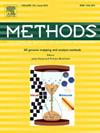A simple, accurate method for the measurement of lysosomal activity
IF 4.3
3区 生物学
Q1 BIOCHEMICAL RESEARCH METHODS
引用次数: 0
Abstract
Lysosomes are responsible for the degradation of intra- and extracellular components and are thus essential for the quality control of proteins and organelles. Lysosomal dysfunction leads to lysosomal storage diseases, and it is therefore important to identify which types of stress cause functional abnormalities. Lysosomal function is generally evaluated by measuring the enzyme activity of lysosomes with fluorescent dyes. However, fluorescence microscopy can lead to different outcomes due to variations in the field of view, the analysis software used, and the parameter settings. We therefore developed a method that uses only a microplate reader and DQ Green BSA, a dye that emits fluorescence upon lysosomal degradation, to ascertain lysosomal activity. HEK293 cells were treated with DQ Green BSA with or without bafilomycin A1 and lysates extracted using cell lysis buffer. Fluorescence intensities and protein concentrations in the cell lysates were then measured using a microplate reader and the bicinchoninic acid method, respectively, and the fluorescence intensity divided by the protein concentration. Results indicated a significant lysosome inhibitor-induced dose-dependent decrease in the lysosomal activity. The Z’-factor of 0.77 obtained using the proposed method is a significant improvement over the − 0.06 obtained using the conventional method. The versatility of the method was evaluated with different cell types, cell lysis buffers, inhibitors, and protease substrates. These results suggest that the method works regardless of the cells or reagents used, and indicates the relative simplicity and accuracy of the proposed method compared to the currently utilized method.

测定溶酶体活性的一种简单、准确的方法。
溶酶体负责细胞内和细胞外成分的降解,因此对蛋白质和细胞器的质量控制至关重要。溶酶体功能障碍导致溶酶体贮积病,因此确定哪些类型的应激导致功能异常是很重要的。溶酶体的功能一般是通过荧光染料测定溶酶体的酶活性来评价的。然而,由于视野、使用的分析软件和参数设置的变化,荧光显微镜可以导致不同的结果。因此,我们开发了一种方法,仅使用微孔板读取器和DQ Green BSA(一种在溶酶体降解时发出荧光的染料)来确定溶酶体的活性。用含或不含巴菲霉素A1的DQ Green BSA和放射免疫沉淀缓冲液提取的裂解物处理HEK293细胞。然后分别使用微孔板读取器和比辛醌酸法测量细胞裂解液中的荧光强度和蛋白质浓度,并将荧光强度除以蛋白质浓度。结果显示溶酶体抑制剂诱导溶酶体活性呈剂量依赖性降低。该方法得到的Z′因子为0.77,比传统方法得到的 - 0.06有显著提高。用不同的细胞类型、细胞裂解缓冲液、抑制剂和蛋白酶底物对该方法的通用性进行了评估,结果表明,无论使用何种细胞或试剂,该方法都有效,表明与目前使用的方法相比,所提出的方法相对简单和准确。
本文章由计算机程序翻译,如有差异,请以英文原文为准。
求助全文
约1分钟内获得全文
求助全文
来源期刊

Methods
生物-生化研究方法
CiteScore
9.80
自引率
2.10%
发文量
222
审稿时长
11.3 weeks
期刊介绍:
Methods focuses on rapidly developing techniques in the experimental biological and medical sciences.
Each topical issue, organized by a guest editor who is an expert in the area covered, consists solely of invited quality articles by specialist authors, many of them reviews. Issues are devoted to specific technical approaches with emphasis on clear detailed descriptions of protocols that allow them to be reproduced easily. The background information provided enables researchers to understand the principles underlying the methods; other helpful sections include comparisons of alternative methods giving the advantages and disadvantages of particular methods, guidance on avoiding potential pitfalls, and suggestions for troubleshooting.
 求助内容:
求助内容: 应助结果提醒方式:
应助结果提醒方式:


